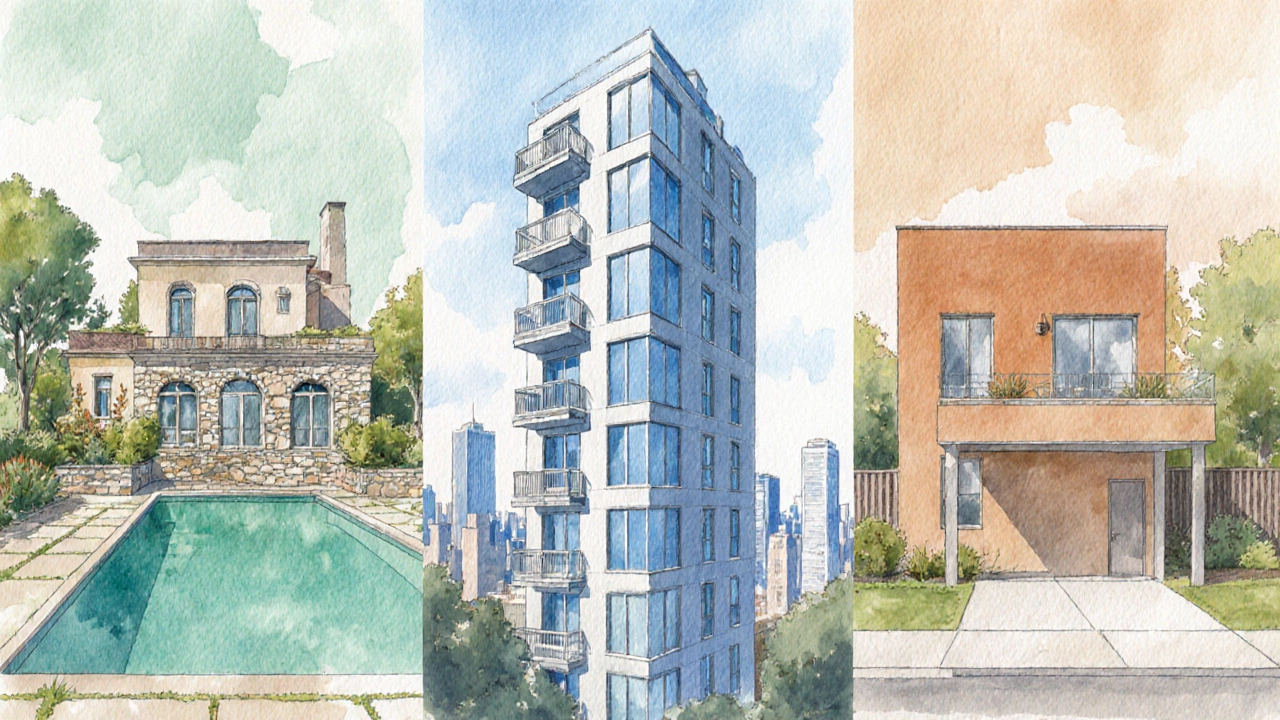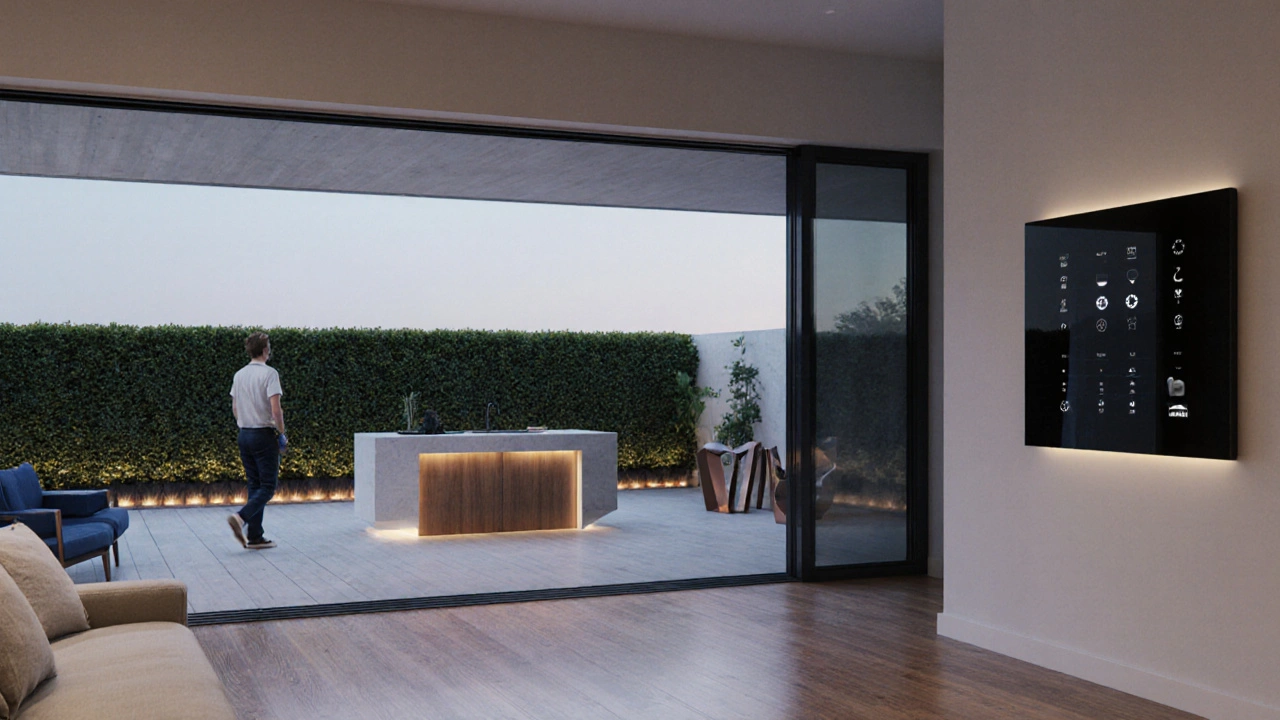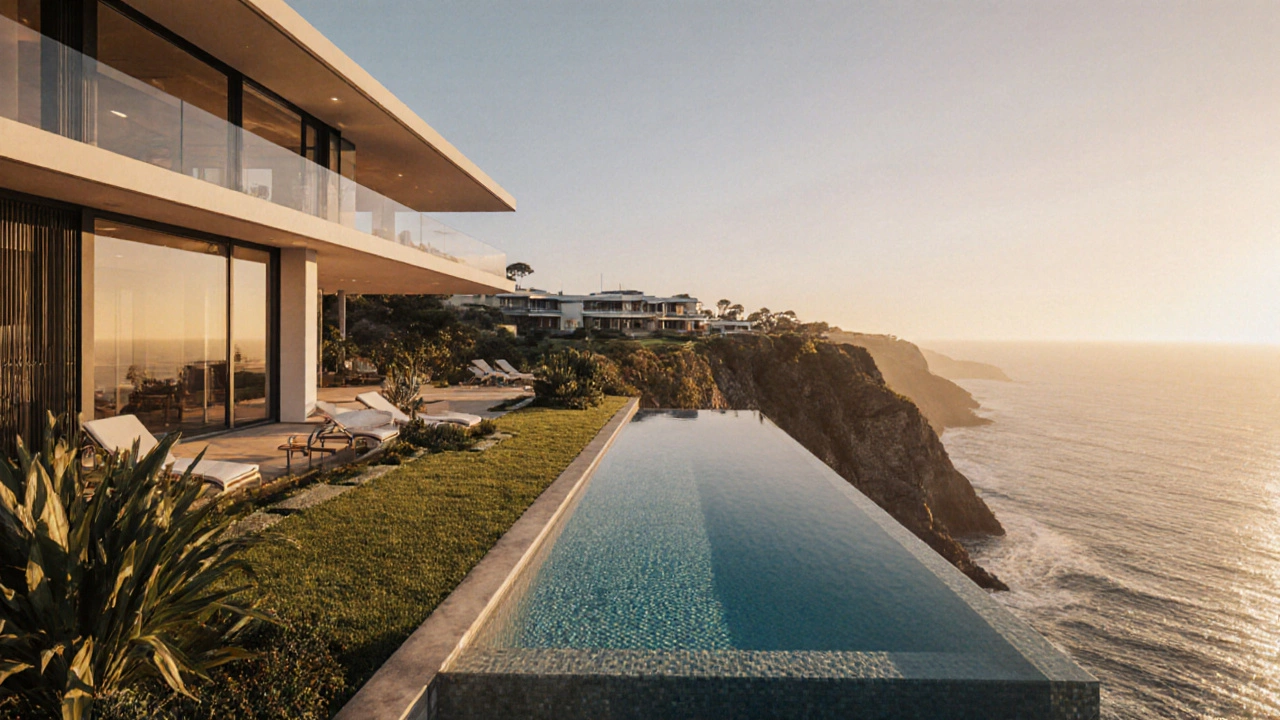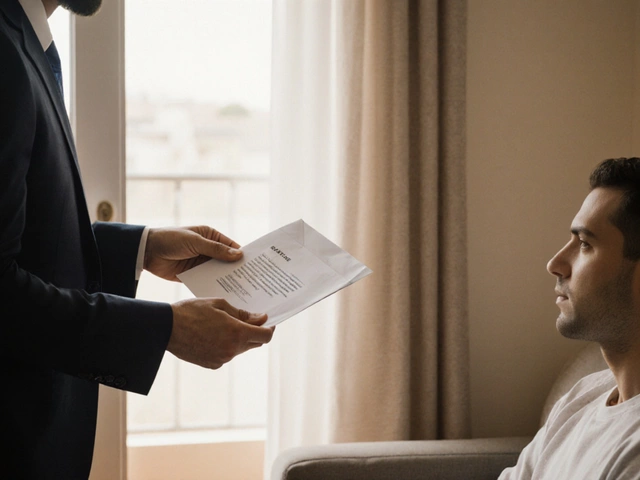Villa Resale Value Calculator
Estimate your villa's potential resale value based on key factors from the article. Inputs must include purchase price, years held, and appreciation rate.
Projected Value:
Key factors: Appreciation Rate: %
Location Premium: +%
Amenity Premium: +%
If you’re eyeing a luxury home, the first question that pops up is: villa resale value. Do villas hold their worth, or will they turn into a money‑sink? The answer isn’t a simple yes or no - it hinges on location, quality, market mood, and a handful of financial factors. This guide breaks down everything you need to know to gauge whether a villa will be a solid investment or a risky bet.
What Drives a Villa’s Resale Value?
Understanding resale value starts with the basics. A villa’s worth when you sell it is the result of several interacting forces.
- Location premium is a price boost that comes from being in a sought‑after neighbourhood, close to schools, transport, and lifestyle hubs. A beachfront plot or a spot near a top‑rated school can add 15‑30% to a future sale price.
- Construction quality is a measure of how well a villa was built, covering materials, workmanship, and durability. High‑grade finishes and solid foundations protect against depreciation.
- Luxury amenities are features such as private pools, home gyms, smart‑home systems, and landscaped gardens that attract affluent buyers. These can shave weeks off the time a property sits on the market.
- Market liquidity reflects how quickly a property type sells in a given market. Villas tend to move slower than apartments because the buyer pool is narrower.
- Tax implications include capital gains tax, stamp duty, and potential depreciation offsets that affect net profit on sale.
Combine these and you have a rough formula:
Resale Value ≈ Purchase Price × (1 + Annual Appreciation Rate)ⁿ - Holding Costs + Location Premium + Amenity Premium
Where “n” is the number of years you hold the villa. The exact percentages vary, but the equation helps you spot the biggest levers.
How Villas Stack Up Against Other Property Types
Most buyers wonder if a villa outperforms an apartment or a townhouse. Below is a quick side‑by‑side look at the three most common luxury‑segment options.
| Metric | Villa | Apartment | Townhouse |
|---|---|---|---|
| Average annual appreciation (2020‑2024) | 6.2% | 4.5% | 5.1% |
| Average days on market | 85 days | 45 days | 60 days |
| Typical maintenance cost per year | 2.5% of property value | 1% of property value | 1.5% of property value |
| Buyer profile | High‑net‑worth families, investors seeking privacy | Young professionals, downsizers | Mid‑level families, dual‑income households |
Villas deliver the highest appreciation but sit on the market longer and cost more to maintain. If you can handle the cash flow, the upside can be worth it.
Regional Influences: Why Melbourne Matters
Living in Melbourne gives me a front‑row seat to how regional quirks affect villa prices. In the inner‑city suburbs like South Yarra or Toorak, villas have consistently outperformed the broader real estate market in the state of Victoria, which tracks median property prices across all types. Over the past five years, these pockets saw an average 7% yearly rise, versus 4.5% for the state overall.
Contrast that with coastal towns such as Portsea, where the market is more volatile. A sudden dip in tourism can shave 10‑15% off resale values within a year. The lesson? High‑demand urban locations usually offer steadier appreciation, while scenic but remote sites can swing dramatically.

Construction Quality and Luxury Amenities: The Hidden Engines
Two villas may sit side by side, but one built with premium brickwork and double‑glazed windows will age far better than a budget‑level structure. When you compare two similar‑priced homes, the one with superior construction quality including structural integrity, material durability, and compliance with modern building codes tends to retain value longer and attracts buyers willing to pay a premium.
Luxury amenities act like a magnetic pull. A heated pool, a home theatre, or a fully integrated smart‑home system can add anywhere from 5% to 12% to a villa’s resale price, according to a 2023 survey by the Australian Property Institute. Even smaller perks-like a dedicated wine cellar or a rooftop deck-can differentiate a property in a tight market.
Financial Factors: Taxes, Mortgage Rates, and Holding Costs
Resale value isn’t just about the headline price. You must factor in the costs you’ll incur while holding the property.
- Tax implications cover capital gains tax (CGT), stamp duty on purchase, and potential tax deductions for depreciation can shave 10‑20% off net profit, especially for investors in the highest marginal tax bracket.
- Mortgage interest rates matter. A 5% loan versus a 3% loan adds roughly $10,000-$15,000 in extra interest over a five‑year hold on a $1.5 million villa.
- Holding costs include council rates, insurance, and the yearly maintenance budget mentioned earlier. Ignoring these can turn an apparent 6% appreciation into a 2% net return.
Running the numbers before you buy helps you set realistic expectations and avoid unpleasant surprises later.
Tips to Maximise Villa Resale Value
- Pick a suburb with a proven location premium such as good schools, transport links, and low crime rates. Proximity to future infrastructure projects (new train lines, hospitals) can boost appreciation.
- Invest in high‑quality construction and timeless finishes. Natural stone, hardwood floors, and energy‑efficient glazing pay off.
- Upgrade with amenities that have broad appeal-think outdoor entertaining spaces, a pool, or a well‑designed kitchen.
- Maintain a strong curb appeal. Regular landscaping, fresh paint, and clean façades keep the property looking move‑in ready.
- Document all upgrades and maintenance. A tidy records folder reassures buyers and can justify a higher price.
- Plan the sale timing around market cycles. Historically, sales in the spring and early summer fetch up to 5% more.

Common Pitfalls to Avoid
Even savvy buyers slip into traps that erode resale potential.
- Over‑customising for personal taste (e.g., ultra‑themed rooms) that narrow the buyer pool.
- Neglecting regular maintenance, leading to hidden defects that scare off investors.
- Buying in a location with limited future growth, such as areas without planned infrastructure upgrades.
- Ignoring market liquidity which can cause the property to sit idle for months, eating into net returns.
Quick Checklist Before You Buy
- Is the suburb projected to grow in population and job opportunities?
- Does the villa have a solid construction pedigree (builder reputation, warranties)?
- Are luxury amenities aligned with broad buyer preferences?
- Can you afford the ongoing maintenance and holding costs?
- Do tax calculations show a net positive after CGT and other fees?
Bottom Line
Villas can deliver strong resale value, especially when you lock in a prime location, choose high‑quality construction, and add universally appealing amenities. The upside is real-average annual appreciation often tops 6% in Australia’s high‑demand corridors. But the downside is equally real: higher maintenance, longer time on market, and complex tax considerations can eat into profits.
Do the math, weigh the factors, and treat a villa purchase like any other investment: with clear expectations, a solid exit plan, and a focus on preserving value.
Do villas appreciate faster than apartments?
Historically, villas in premium suburbs have shown higher annual appreciation-around 6‑7% versus 4‑5% for apartments. The gap comes from land value, privacy, and exclusive amenities that apartments lack.
How long does it usually take to sell a villa?
On average, villas sit on the market for 70‑90 days in major Australian cities. In regional or ultra‑luxury markets, the timeline can stretch to 120 days or more.
What are the biggest hidden costs when owning a villa?
Beyond the mortgage, expect higher council rates, insurance premiums for larger structures, and annual maintenance that can run 2‑3% of the property’s value. Tax on capital gains also reduces net profit if you sell within a short period.
Are there specific features that add the most resale value?
Features with broad appeal-like a modern kitchen, outdoor entertaining area, heated pool, and integrated smart‑home tech-typically add 5‑12% to the final selling price.
Should I buy a villa for personal use or as an investment?
If you plan to live there, the emotional value outweighs pure financial returns. As an investment, focus on location, construction quality, and market timing to maximize resale gains.






